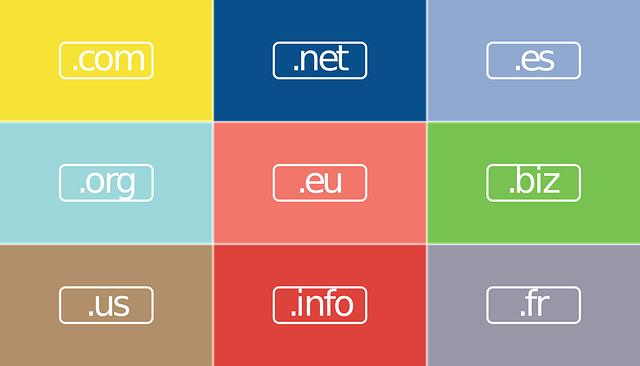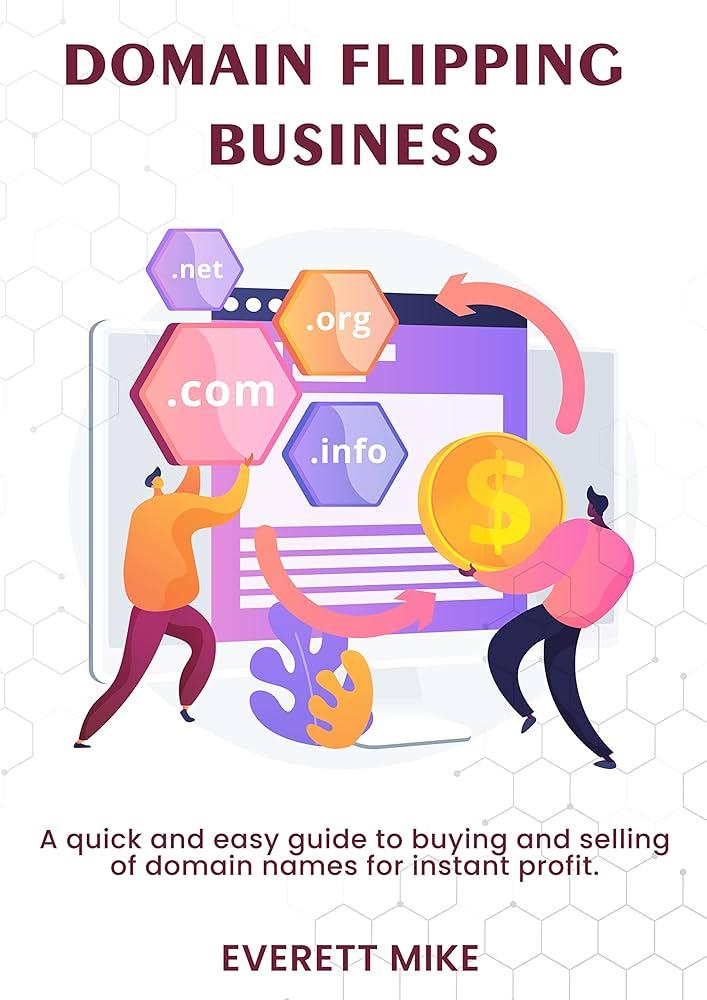Table of Contents
- Understanding Domain Flipping and Its Profit Potential
- Identifying Valuable Domains Through Research and Analysis
- Effective Strategies for Buying and Selling Domains
- Building a Sustainable Domain Portfolio for Long-Term Success
- Navigating Legal and Ethical Considerations in Domain Flipping
- Q&A
- In Summary
Understanding Domain Flipping and Its Profit Potential
Domain flipping is a fascinating aspect of online entrepreneurship that has gained considerable traction in recent years. Essentially, it involves buying domain names at a low price and selling them later for a profit. The keys to success in this venture lie in understanding market trends, recognizing the value of domains, and knowing how to market them effectively. Many successful flippers focus on short, memorable names or those that incorporate popular keywords that people often search for, as these tend to attract potential buyers more effectively.
One of the critical factors influencing the profitability of domain flipping is the timing of purchases and sales. Acquiring domains when trends are burgeoning—like new technologies, businesses, or cultural phenomena—can lead to significant returns. Moreover, certain domain extensions, such as .com or .io, typically hold more value. Factors contributing to a domain’s worth include:
- Length: Shorter domains generally command higher prices.
- Keyword Relevance: Domains that include trending or high-volume keywords are sought after.
- Brandability: Names that can easily become recognizable brands are more desirable.
To maximize profitability, domain flippers utilize various strategies to enhance their chances of closing lucrative deals. This can include building a portfolio of diverse domains, utilizing effective negotiation tactics, and leveraging online marketplaces to reach a wider audience. It’s also invaluable to keep track of market trends and potential buyers’ preferences. Here’s a quick glance at some strategies:
| Strategy | Description |
|---|---|
| Research | Identify and analyze trending keywords and business names. |
| Brand Development | Create a compelling story around domains to sell for higher prices. |
| Networking | Engage with potential buyers through social media and marketplaces. |


Identifying Valuable Domains Through Research and Analysis
When delving into the world of domain flipping, it’s essential to conduct thorough research to identify domains that hold the potential for significant resale value. Start by exploring expired domains, which may already have backlinks and traffic, making them more attractive to buyers. Tools like Ahrefs, SEMrush, and GoDaddy Auctions are invaluable as they can provide metrics such as domain authority, historical traffic data, and keyword rankings.
Additionally, consider the niche relevance of domains you come across. Domains that align with trending topics or established industries typically attract more interest. Here are some factors to help assess niche relevance:
- Keyword Richness: Does the domain contain popular keywords related to your target market?
- Brandability: Is the domain easy to pronounce and memorable?
- Length: Shorter domains are usually preferred and tend to sell at higher prices.
To organize your findings and streamline your decision-making process, consider creating a comparison table of potential domains. Use criteria like age, traffic volume, and backlink profile. Here’s a simple layout to guide you:
| Domain Name | Age (Years) | Monthly Traffic | Backlinks |
|---|---|---|---|
| exampledomain.com | 8 | 500 | 150 |
| greatdomain.net | 5 | 300 | 75 |
| valuableinfo.org | 10 | 800 | 200 |
By synthesizing this information, you can better pinpoint domains that are not only valuable but also align with your flipping strategy, ultimately maximizing your chances for profits in this competitive market.


Effective Strategies for Buying and Selling Domains
Engaging in domain flipping requires an understanding of both market dynamics and personal strategic planning. First and foremost, research is key. Take time to explore online marketplaces like GoDaddy, Flippa, or Sedo to grasp pricing trends. Analyze domains that have recently sold and note their attributes. Look for patterns in keywords, length, and extension types that fetch higher prices. A well-researched domain, whether focusing on brandability or SEO potential, can significantly enhance your leverage as a buyer or seller.
When it comes to acquisition strategies, consider these effective approaches:
- Expired Domains: Often, expired domains can be reclaimed for a fraction of their potential value. Check auction sites for these opportunities and evaluate their historical traffic and backlinks.
- Brandable Names: Aim for catchy and memorable domain names. Short names or those with popular keywords can easily attract buyers.
- Negotiation Tactics: Don’t hesitate to negotiate with domain sellers. A persuasive and well-supported offer can lead to favorable deals.
On the selling end, presentation is equally vital. Enhance your listings with informative descriptions that highlight the value of the domain. Use a clean visual format, as shown in the table below, to convey key information effectively:
| Domain Name | Traffic Potential | Asking Price |
|---|---|---|
| BestGadgets.com | High | $2,500 |
| TravelMagic.net | Moderate | $1,200 |
| EcoSmartTips.org | Low | $800 |
This clear presentation helps potential buyers quickly assess a domain’s value, encouraging inquiries and sales. always keep an eye on industry trends and be prepared to pivot your strategy as the market evolves. Building a reputation for offering quality domains can lead to repeat buyers and consistently higher sales prices.


Building a Sustainable Domain Portfolio for Long-Term Success
Creating a successful domain portfolio requires a strategic approach that prioritizes sustainability alongside profitability. By focusing on quality over quantity, investors can curate a collection of domains that not only have immediate appeal but also long-term value. Start by researching trends within your targeted niches to identify keywords and phrases that are gaining traction. Use tools like Google Trends or keyword planners to discover relevant phrases and look for domains that are easy to remember, brandable, and position well for SEO.
Consider these essential factors when building your portfolio:
- Brandability: Domains that have a catchy, memorable quality are more likely to attract buyers.
- Keyword Relevance: Domains with relevant keywords can improve search engine rankings, driving organic traffic.
- Length and Simplicity: Shorter domains are typically preferred as they are easier to remember and type.
To further enhance your investments, it’s crucial to monitor market trends and shifts in consumer behavior. Frequently reassess your portfolio and adjust your strategies based on the performance of your domains. Establish clear goals and metrics for measuring success, whether through resale price, rental agreements, or established traffic flow. Below is a simple representation of potential metrics to track:
| Domain Name | Purchase Price | Current Market Value | Traffic (Monthly) |
|---|---|---|---|
| trendytech.com | $500 | $1,500 | 2,000 |
| healthybites.org | $300 | $800 | 1,200 |
| urbanstyle.net | $400 | $1,100 | 1,800 |


Navigating Legal and Ethical Considerations in Domain Flipping
When delving into the world of domain flipping, it’s crucial to understand the legal and ethical frameworks that govern this practice. Domains are digital real estate, and just like physical property, they come with rights and responsibilities. Trademark issues frequently arise; selling a domain containing a registered trademark can lead to legal troubles. Always conduct a thorough trademark search before purchasing a domain to avoid overstepping legal boundaries. Furthermore, using a domain name that misleads potential visitors could expose you to claims of false advertising or fraud.
Another important aspect is the ethical implications of domain flipping. While buying domains and reselling them for a profit is legitimate, squatting on domains—acquiring names solely to sell them at inflated prices—treads a fine line. This practice can damage relationships with businesses and individuals alike and foster an unhealthy market environment. To engage in ethical flipping, focus on acquiring domains that have inherent value or significance, such as names that are relevant to popular trends, brands, or industries.
Lastly, it’s essential to familiarize yourself with the rules established by domain registrars and governing bodies like ICANN. These organizations set out guidelines to ensure fair play in the domain marketplace. For instance, an organized approach to pricing and transparency can help build trust within the community. Consider maintaining an accessible record of transactions, adhering to fair pricing strategies, and avoiding deceptive practices. Here’s a quick table to summarize some key points to keep in mind:
| Key Considerations | Impact |
|---|---|
| Trademark Searches | Prevents legal issues |
| Ethical Flipping | Builds community trust |
| Regulatory Compliance | Ensures sustainability |
Q&A
Q&A: Learning Domain Flipping
Q1: What is domain flipping? A1: Domain flipping refers to the process of buying domain names at a low price and reselling them at a higher price. It’s similar to real estate flipping, where investors purchase properties with the intention of enhancing their value and selling them for profit. In the digital realm, domain names can be seen as virtual real estate, and savvy investors seek out catchy, relevant, or trending names to maximize their return.
Q2: How do I get started in domain flipping? A2: To start with domain flipping, first, you’ll want to do some research. Familiarize yourself with popular domain registrars like GoDaddy or Namecheap. Next, determine what types of domains are in demand. Look for short, memorable names, or ones with keywords relevant to popular industries. Once you have some domain names in mind, purchase them, and then list them for sale on platforms such as Sedo, Flippa, or even social media.
Q3: What makes a domain name valuable? A3: The value of a domain name can be influenced by several factors, including its length, memorability, keyword relevance, market demand, and extension (like .com, .net, or .org). Generally, shorter domain names that are easy to spell and pronounce tend to be more valuable. Additionally, names that contain trending keywords or phrases can also attract higher offers.
Q4: How do I find and evaluate available domain names? A4: Using domain auction sites and keyword research tools can help you discover available domain names. Tools like Google Trends, Ubersuggest, and NameMesh can aid in brainstorming ideas. When evaluating a domain, consider its history using platforms like the Wayback Machine to see its past uses, and check its SEO metrics for existing traffic or backlinks, as these can significantly affect its market price.
Q5: What risks are associated with domain flipping? A5: Like any investment, domain flipping comes with risks. The main one is the potential for not being able to sell a domain at a profitable price. Additionally, the market for domains can be unpredictable, with trends changing rapidly. There’s also the chance of purchasing a domain name with legal issues (trademark conflicts) that could hinder resale efforts. Conducting thorough research and being aware of industry trends can help mitigate these risks.
Q6: How long does it typically take to flip a domain? A6: The flipping timeline varies greatly and can depend on several factors, including market demand and your marketing efforts. Some domains sell within days or weeks, while others might sit for months before an interested buyer emerges. Patience and persistence are key in this business, as the right buyer may take time to find. Effective marketing strategies can help speed up the process.
Q7: What tips do you have for successfully flipping domains? A7: To maximize your success in domain flipping, follow these tips:
- Focus on buying domains that have clear potential for growth.
- Stay informed about trends in various industries to anticipate demand.
- Use clear and appealing listings with good descriptions and proper keywords to attract potential buyers.
- Be open to negotiation; sometimes a higher profit can come from flexibility in pricing.
- Engage with online communities or forums centered around domain flipping to learn from the experiences of others.
Q8: Can I make a living from domain flipping? A8: While many individuals successfully make money through domain flipping, it typically requires time, education, and a strategic approach. Some have turned domain flipping into a full-time career, while others use it as a side hustle. Success will depend on your investment strategy, persistence, and the time you dedicate to learning the market. With the right approach, yes, you can earn a substantial income from domain flipping, but it’s not a guaranteed revenue stream for everyone. — Explore the art of domain flipping with patience and creativity, and you might just discover your own digital gold mine!

